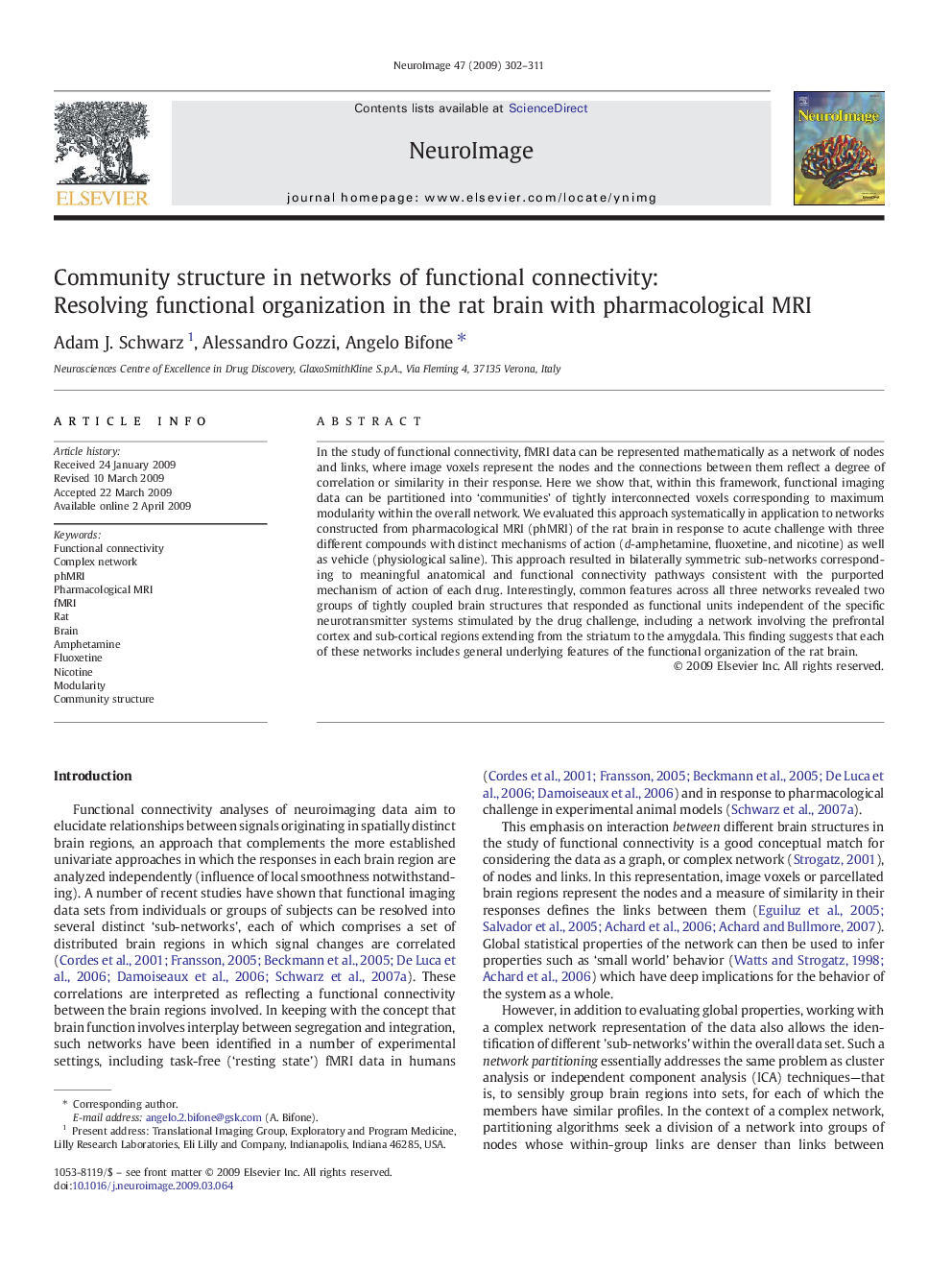| Article ID | Journal | Published Year | Pages | File Type |
|---|---|---|---|---|
| 6036853 | NeuroImage | 2009 | 10 Pages |
Abstract
In the study of functional connectivity, fMRI data can be represented mathematically as a network of nodes and links, where image voxels represent the nodes and the connections between them reflect a degree of correlation or similarity in their response. Here we show that, within this framework, functional imaging data can be partitioned into 'communities' of tightly interconnected voxels corresponding to maximum modularity within the overall network. We evaluated this approach systematically in application to networks constructed from pharmacological MRI (phMRI) of the rat brain in response to acute challenge with three different compounds with distinct mechanisms of action (d-amphetamine, fluoxetine, and nicotine) as well as vehicle (physiological saline). This approach resulted in bilaterally symmetric sub-networks corresponding to meaningful anatomical and functional connectivity pathways consistent with the purported mechanism of action of each drug. Interestingly, common features across all three networks revealed two groups of tightly coupled brain structures that responded as functional units independent of the specific neurotransmitter systems stimulated by the drug challenge, including a network involving the prefrontal cortex and sub-cortical regions extending from the striatum to the amygdala. This finding suggests that each of these networks includes general underlying features of the functional organization of the rat brain.
Keywords
Related Topics
Life Sciences
Neuroscience
Cognitive Neuroscience
Authors
Adam J. Schwarz, Alessandro Gozzi, Angelo Bifone,
